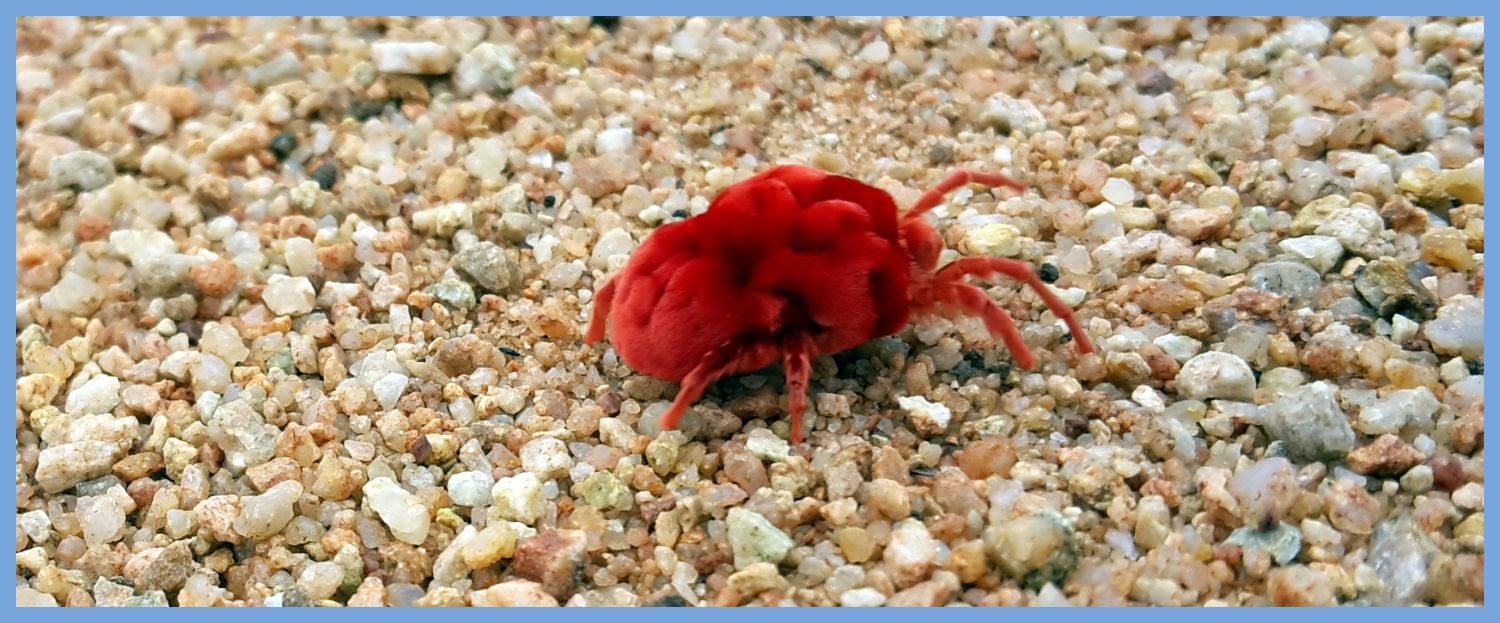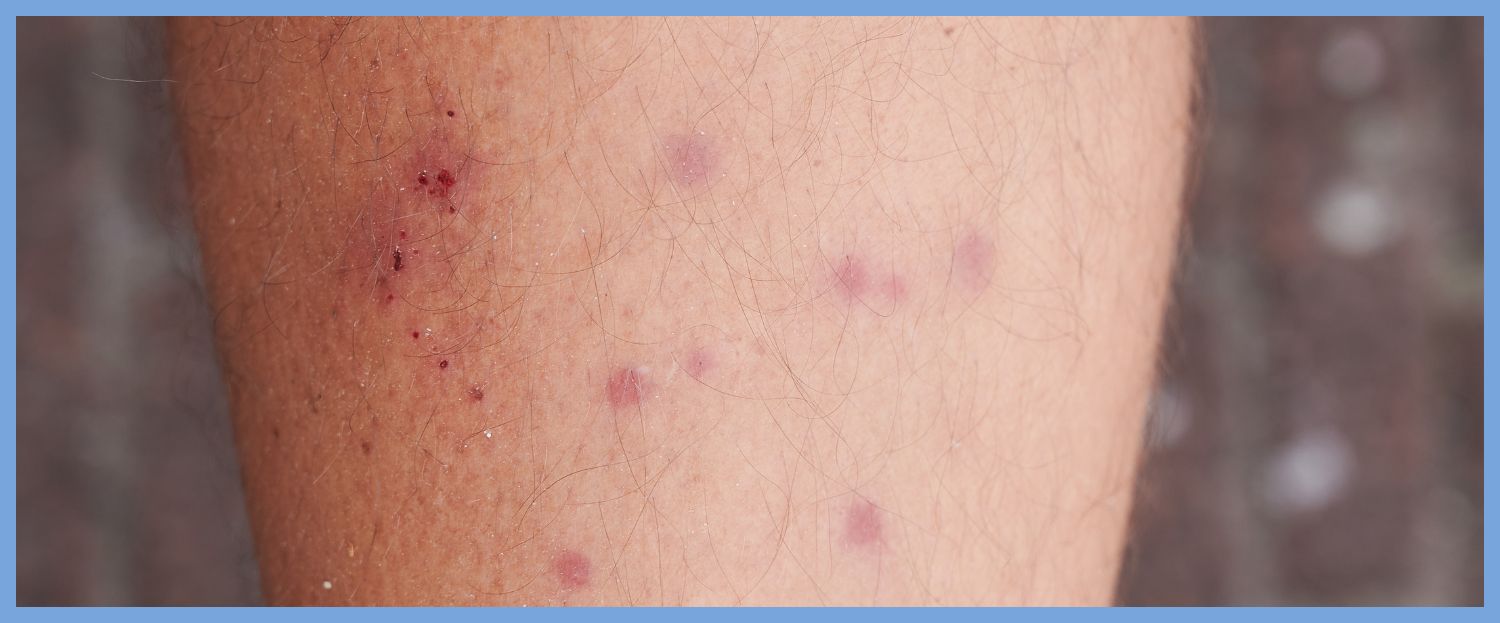Chiggers - What Are They and What To Look Out For?
Chiggers, the tiny larvae of harvest mites, are notorious for causing intense itching and skin irritation. Often confused with bed bug bites, chigger bites are the result of these minuscule pests feeding on human skin cells. Unlike other biting mites or insects, chiggers attach themselves to the skin and secrete digestive enzymes that break down skin cells, which they then ingest. This feeding process can cause red bumps and severe itching, often leading individuals to believe that their beds are infested.
Identifying chiggers in your bed can be a challenge due to their microscopic size. They are typically found outdoors in grassy or wooded areas, but they can hitch a ride indoors on clothing or pets. Once inside, they might end up in bedding, where they can bite and feed off of humans at rest. While chiggers themselves do not live in beds or feed on blood, their presence and bites can cause significant discomfort.
Management of chigger bites involves alleviating symptoms, as the chiggers do not remain attached to the skin after feeding. The intense itch can be mitigated with antihistamines and soothing skincare products.
To prevent further bites, it is crucial to wash bedding in hot water and ensure a thorough cleaning of the living area, especially if there has been recent outdoor activity or exposure to environments where chiggers thrive.

Identifying Chigger Bites
Chigger bites can be recognised by their distinct appearance and the symptoms they produce. They are often confused with bites from other insects, but certain characteristics help in their identification.
Appearance of Bites
Chigger bites often appear as small, red bumps on the skin that may develop into itchy, raised welts. These welts can be singular, but they typically appear in clusters due to multiple bites in close proximity. Unlike some insect bites, chigger bites do not have a central puncture mark.
Symptoms and Common Reactions
The most common reaction to chigger bites is intense itching, which usually starts several hours after being bitten. The skin around the bites may become inflamed or swollen, and scratching can lead to secondary infection. It is essential to resist the urge to scratch to prevent further skin irritation.
Differences from Other Insect Bites
Identifying the culprit behind an insect bite is crucial as it can dictate the appropriate course of treatment. Chigger bites are often confused with those from bed bugs, ticks, and other insects. However, several distinguishing factors can help to differentiate them.

Chiggers Vs Bed Bugs
Appearance:
- 🔴 Chigger bites often appear as small, reddened areas that may develop into blisters or pustules.
- 📍 Bed bug bites typically manifest as raised, flat red welts in zigzag lines or small clusters.
Bite Reaction:
- 🔥 Chigger bites induce intense itching that can last for several days and are more commonly found around the areas of constricted clothing.
- 😣 Bed bug bites might also itch but the discomfort usually subsides more quickly, and these pests frequently feed on exposed skin while you sleeps.
Location:
- 🌿 Chiggers are usually encountered in outdoor areas with vegetation.
- 🛏️ Bed bugs are primarily found indoors, especially in the seams of mattresses and furniture.
Chiggers Vs Ticks
Size and Visibility:
- 🔍 Chiggers are nearly microscopic and are hard to spot with the naked eye.
- 🕷️ Ticks are larger, visible arachnids that can sometimes be seen on the skin.
Duration of Attachment:
- 🚶♂️ Chiggers do not latch on; they bite and then leave the host.
- 🧷 Ticks attach themselves to the host for prolonged periods to feed on their blood.
Bite Symptoms:
- 🥵 Chigger bites cause significant itchiness and may form reddish welts.
- 🚑 Tick bites are typically less itchy but may lead to more serious conditions if the tick is a carrier of diseases such as Lyme disease.
Prevention:
- 🧴 To avoid chigger bites, you can use insect repellent and wear protective clothing outdoors.
- 👀 To prevent tick bites, you should check for ticks after spending time in wooded or grassy areas and use tick repellents.
Recognising these differences aids in effective response and prevention of future bites.
Preventing Chigger Bites
To protect oneself from chigger bites in bed, it is crucial to employ both protective measures and exhibit environmental awareness. These prevention strategies reduce the likelihood of chiggers inhabiting sleeping areas and thus, biting.

Protective Measures
You can take several defensive steps before getting into bed to prevent chigger bites. Clothing is the first line of defence. Wearing long trousers and long-sleeved shirts can minimise skin exposure to chiggers. Before going to sleep, especially if you has spent time in wooded areas or near lush vegetation during the day, it is recommended to:
- Change into clean clothing.
- Shower to remove any chiggers or chigger larvae.
Using insect repellent containing DEET on the skin and on clothing can provide substantial protection. Products should be applied according to the manufacturer's instructions.
|
DEET Concentration |
Protection Duration |
|
10% |
Up to 2 hours |
|
20% |
Up to 4 hours |
|
30% |
Up to 5 hours |
Environmental Awareness
Environmental control is essential to reduce chigger populations in areas where you may walk before entering the bed. Keeping gardens and yards well-manicured lowers the likelihood of chigger infestations. Actions include:
- Removing leaf litter and tall weeds.
- Mowing the lawn regularly to keep grass short.
- Keeping beds away from wooded areas or thick vegetation.
By using these protection and environmental strategies, the risk of chigger bites in bed can be significantly decreased.
Treatment and Management
When dealing with chiggers in bed, it is essential to take quick actions to alleviate discomfort and prevent further bites. Here are the immediate measures, medical treatments, and home remedies one can use to manage the situation.

Immediate Actions
- 🧼 Wash Affected Areas: Thoroughly cleanse the skin with mild soap and hot water to remove any chiggers that are still attached.
- ❄️ Apply Cold Compress: For immediate relief from the itching, apply a cold compress to the bite sites to reduce inflammation and discomfort.
Medical Treatments
- 💊 Topical Ointments: Apply over-the-counter hydrocortisone cream to decrease itchiness and inflammation.
- 🍬 Oral Antihistamines: If itching persists, one may consider taking an oral antihistamine for additional relief.
- 🩺 Consultation with a Doctor: Should symptoms escalate or if any signs of infection appear, one must consult a doctor for professional medical advice.
Home Remedies
- 🧴 Calamine Lotion: This can be applied directly to the bites to soothe itching and aid in the healing process.
- 🥣 Baking Soda Paste: A paste made from baking soda and water may provide symptomatic relief when applied to the affected area.
It is also prudent to wash bed linens and affected clothing in hot water to kill any chiggers present, preventing the possibility of new bites.
Complications of Chigger Bites
Chigger bites can become problematic if they lead to infection or severe skin reactions. These complications may necessitate medical attention.
Signs of Infection
An individual may observe that the site of a chigger bite becomes infected if the skin around it turns increasingly red, swollen, or tender. Pus or an increase in pain, especially several days after the bite, can also be indicative of infection. If the affected area develops blisters or weeping lesions, this may suggest a bacterial infection has set in.
When to Seek Medical Help
Medical help should be sought when a person experiences a rash or hives that expands or becomes widespread. If fever accompanies the bites, it could signify a systemic reaction. Should swelling not subside or worsen, or if breathing difficulties occur, these are urgent signs that medical advice is needed. Symptoms that persist without improvement also warrant a healthcare provider's assessment.
Myths and Misconceptions
When discussing the issue of chiggers, it is essential to distinguish between the facts and the fallacies that commonly circulate. This section aims to clarify and correct some widespread myths.
Addressing Common Myths
One recurrent myth is that chiggers burrow into human skin to feed. In reality, chiggers do not burrow. They attach to the skin surface and inject digestive enzymes that break down skin cells, which are then consumed as food.
Misconception: Chiggers are a type of tiny spider. Fact: Chiggers are mites, not spiders, though both belong to the arachnid family. Mites and spiders both have eight legs, but their behaviour and life cycles differ significantly.
Facts Vs Fiction
Visible vs Microscopic:
- 🛑 Myth: Chiggers are easily visible to the naked eye.
- ✅ Fact: They are microscopic and difficult to see without magnification.
Survival in Bedding:
- 🛑 Myth: Chiggers can survive and infest household bedding.
- ✅ Fact: Chiggers are better adapted to outdoor environments, particularly damp areas with thick vegetation, and do not typically thrive in dry indoor habitats like human bedding.
By addressing these misconceptions with clear facts, one can better understand chiggers and how to manage encounters with them.




